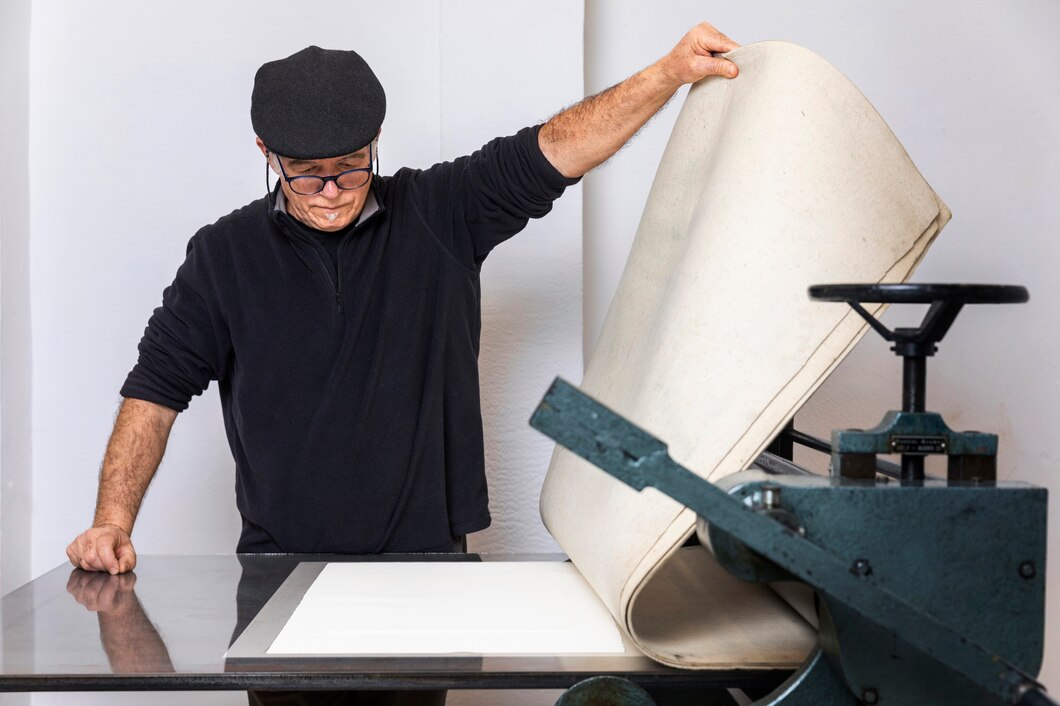Digital printing has evolved with the rise of UV DTF and DTF printing. Both methods offer unique advantages and suit different applications. The right technology depends on your needs, budget, and materials. This article offers a detailed comparison of UV DTF and traditional DTF printing. It will help you make an informed decision. For the best UV DTF printing, check a trusted UV DTF manufacturer for high-performance solutions.
What is DTF printing?
Direct-to-Film (DTF) printing is a new process. It prints designs onto a special transfer film. Then, it transfers these prints onto surfaces like fabrics. Unlike traditional methods, DTF does not require pre-treating materials. So, it is convenient and versatile. It works well for printing on cotton, polyester, or blended fabrics. These include T-shirts, aprons, and pillowcases.
What is UV DTF printing?
UV DTF printing builds on the DTF concept, incorporating ultraviolet curing technology. This lets UV DTF printers print durable, high-quality designs on non-fabric materials. These include glass, metal, plastic, and ceramics. UV DTF is perfect for advertising, packaging, and custom gifts. These industries need vibrant, precise printing.
Key Differences Between UV DTF and Traditional DTF:
Materials and Applications:
Traditional DTF: Best suited for textiles and garments. Frequently used for T-shirts, bags, caps, and other fabric-based items.
UV DTF: Designed for non-porous surfaces like plastics, glass, wood, and metal. It is popular for creating crystal labels, stickers, and decorative items.
UV DTF can work with more materials. So, it’s ideal for businesses that want to expand beyond garments.
2. Print Quality and Durability:
Traditional DTF produces sharp, vibrant prints. But you can only use it on fabrics. The prints are soft to the touch and can withstand washing.
UV DTF: Its UV curing technology gives it superior image quality and detail. The prints are very durable. They resist water, abrasion, UV rays, and chemicals. So, they are suitable for outdoor use.
3. Production Speed and Workflow:
Traditional DTF: Faster when printing on garments, especially for bulk production. But it requires heating for adhesive bonding. This can slow the workflow.
UV DTF has a curing process that takes more time. But it eliminates the need for heat-based adhesives. This results in a streamlined operation for non-textile applications.
4. Cost Efficiency:
Traditional DTF: It’s cheaper for garment printing. It uses simpler technology and materials.
UV DTF: Higher initial investment due to advanced machinery and UV-curable inks. Yet, its versatility and quality make it cost-efficient for businesses targeting premium markets.
5. Maintenance Requirements:
Traditional DTF: It needs regular cleaning of print heads. You must use specific consumables, like powder adhesives and films.
UV DTF needs regular maintenance of UV lamps and print heads. But, it has fewer material handling issues.
6. Environmental Impact:
Traditional DTF: Uses heat and adhesive powders, which can generate waste.
UV DTF has a lower environmental impact. UV curing uses fewer consumables and creates little waste.
When to Choose UV DTF Printing?
If your business makes high-value, custom home decor, ads, or gift products, use UV DTF. It’s the best choice. It lets you print on unusual materials with precision and durability. It gives your products a premium edge.
Explore advanced UV DTF solutions from https://www.dtflinko.com, a leading digital printing innovator. Their UV DTF printers use cutting-edge technology. They help businesses improve their printing.
When to Choose Traditional DTF Printing?
Traditional DTF is ideal for businesses that focus on garment printing. It is cost-effective, easy to use, and provides excellent results for textiles. Small startups and apparel-focused companies can gain from this tech.
Conclusion:
UV DTF and traditional DTF printing serve different purposes. They cater to various industries and applications. Traditional DTF excels in textile printing, offering affordability and efficiency for garment-focused businesses. In contrast, UV DTF is more versatile and durable. It can print on many materials, making it ideal for premium markets.
To decide between the two, assess your business needs, target market, and budget. For top UV DTF printers and expert help, visit a trusted manufacturer today. Let innovation and technology drive your business to new heights!



